This Easy Mentaiko Pasta adds bursts of salty cod roe and pops of aromatic shiso to typically Western ingredients like spaghetti, heavy cream and butter.
Mentaiko pasta is one of the most popular ways to enjoy wafu pasta, the legendary Japanese-style Western pasta dishes that originated in Japan during the 1940s.
If you’re not familiar with wafu pastas, then mentaiko pasta is a good place to start.
And as a bonus, it’s so easy to make that it’ll be done in just about the time it takes to boil spaghetti.
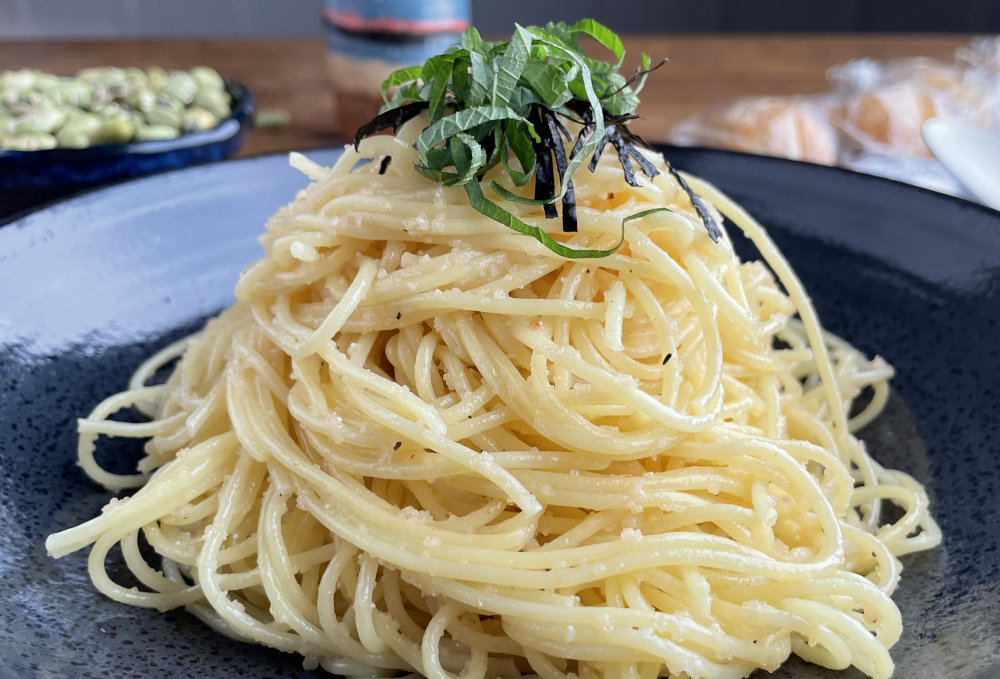
What is mentaiko pasta?
Mentaiko pasta is a type of wafu pasta (Japanese-style Western pasta dishes) that uses Japanese ingredients like salted cod roe, soy sauce, shiso, and nori with Western ingredients like spaghetti, heavy cream, milk and butter.
This dish was invented in Shibuya, Tokyo during the 1960s. Since then, it’s become quite popular throughout Japan and is one of the defining recipes of the wafu pasta tradition.
Though the dish uses salted cod roe, it doesn’t have a very fishy taste. The tiny fish eggs add more of a salty, slightly spicy flavor to the dish. Because of their salty flavor and slightly crunchy texture, they’re reminiscent of the grated parmesan you’ll find in traditional Italian recipes.
And where Italian pastas are garnished with herbs like basil and parsley, you’ll find wafu pastas usually topped with shiso and shredded nori. Shiso adds an aromatic, peppery flavor to the pasta that’s similar to basil. Nori adds a whole new dimension of deep, umami-laden ocean flavor.
Mentaiko pasta is just one of the many types of wafu pasta. Ketchup-based Spaghetti Napolitan, and fungi-packed wafu mushroom pasta are other popular choices.
Mentaiko FAQs
The salty, spiced cod roe isn’t used very often outside of Japan and you may not be very familiar with this ingredient. Here are some of the popular questions people have about these tiny fish eggs.
What is mentaiko?
Mentaiko is a type of cod roe that’s marinated in salt, chili flakes, and other spices. You’ll find it in Japanese grocery stores in either the fresh seafood section or in the freezer aisle.
The roe are sealed in small membrane sacs, which are totally edible, but I’ll admit don’t sound very appetizing. In this recipe, you’ll use just the eggs and discard the sacs.
The taste is salty, slightly spicy, and packed with umami. It’s not very fishy tasting at all.
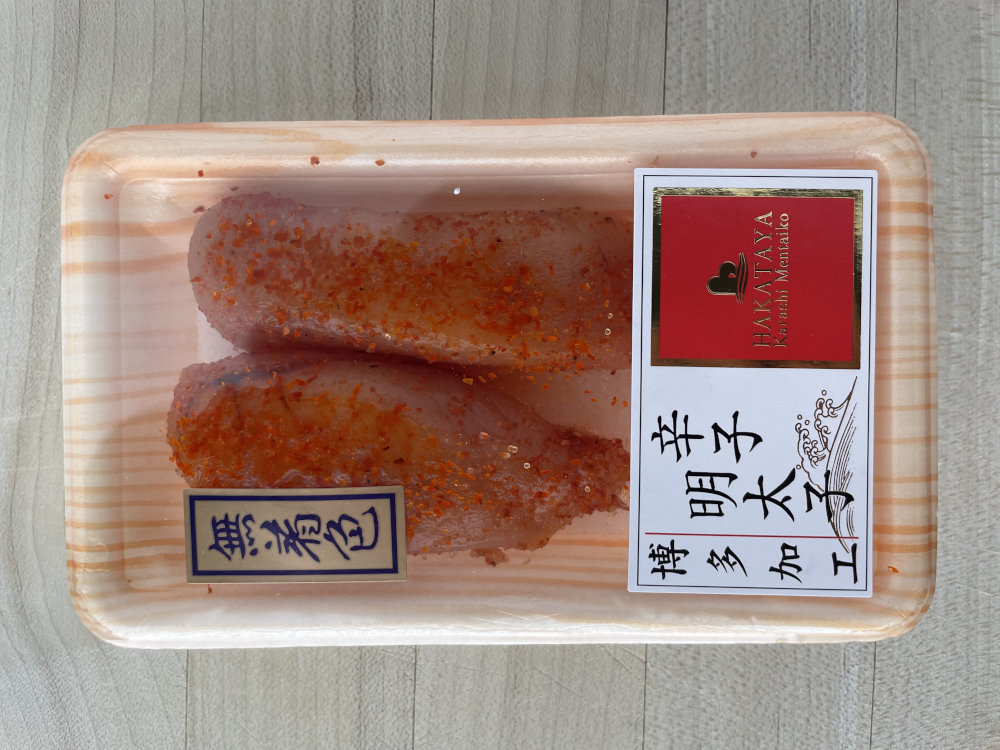
Is mentaiko different from tarako?
Mentaiko is similar to another Japanese seafood ingredient called tarako.
Both mentaiko and tarako are salted cod roes. The only difference is that mentaiko has added chili flakes and spices, while tarako is just plainly salted. Because of the chili flakes, mentaiko has a red color. And since tarako has just salt, it’ll be a more plain, beige color.
If you can only find tarako, you can use the tarako as a substitute for mentaiko in this recipe. Your end dish won’t have quite as much flavor or spice, but it’ll still taste fine.
Do you eat mentaiko raw?
You can safely eat Mentaiko raw, like in this pasta dish.
The raw version is used throughout Japanese cuisine. Onigiri, temaki, and rice bowls are just a few of the ways to enjoy the raw fish eggs.
Mentaiko is also cooked and eaten alone as a side dish or even used as a topping for pizza.
Where can I buy mentaiko?
Mentaiko is a bit difficult to find if you don’t have access to any Japanese grocery stores, and I haven’t seen it sold elsewhere.
If you don’t have a local Japanese grocery store, you can purchase frozen mentaiko online.
How long does mentaiko last?
Once thawed, mentaiko can be stored in the refrigerator for up to 14 days if packed well enough.
Can you freeze mentaiko?
Mentaiko freezes well. Pack the mentaiko tightly in plastic wrap and then a freezer bag before storing in your freezer.
How to defrost mentaiko?
Because of its delicate texture, mentaiko should not be thawed in the microwave. Thaw mentaiko overnight in the fridge.
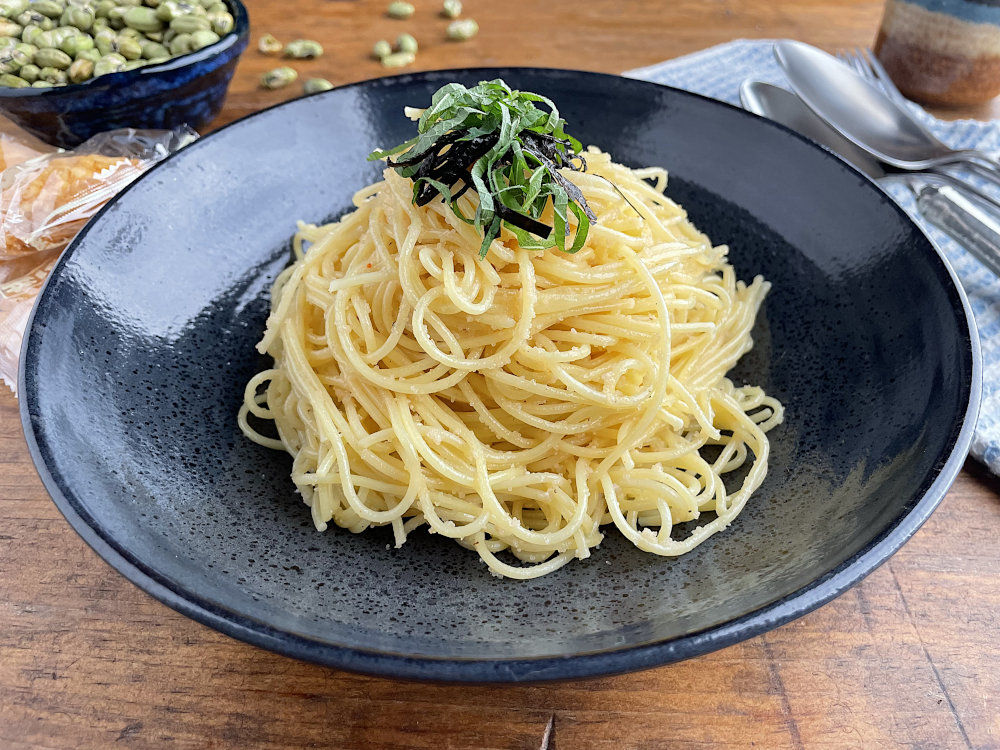
How to make mentaiko pasta
- Boil the pasta. Cook the spaghetti according to the package’s instructions.
- Make the sauce. While the spaghetti is boiling, add the mentaiko, heavy cream, milk, melted butter, light soy sauce, pepper and a pinch of salt to a large bowl and mix well. The sauce doesn’t need to be cooked and will warm up once tossed with the spaghetti.
- Toss the pasta with the sauce. Drain the spaghetti once it’s done and add it directly to the large bowl with the sauce. Toss the spaghetti with the sauce to evenly distribute.
- Garnish and serve. Place the pasta in individual serving dishes and garnish with shredded nori and shiso. Serve right away.
Ingredients
Spaghetti. Mentaiko pasta is traditionally made with Italian-style spaghetti. I used the Japanese brand called “Mama”, but any type of spaghetti would work perfectly.
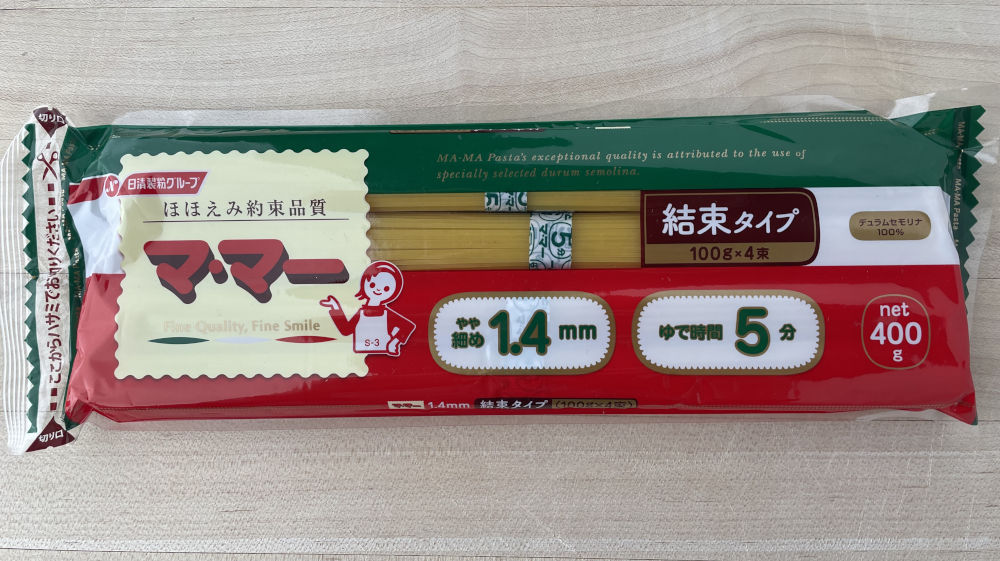
Mentaiko. The Japanese salted cod roe provides this recipe’s trademark salty, slightly spicy flavor. If you can’t find mentaiko, you can use tarako, which is another type of salted cod roe that’s identical to mentaiko except without the chili flakes and spices. Your dish will have a bit less flavor and spice, but will still turn out fine. Besides tarako, there’s no other good substitute for this recipe.
Heavy cream, milk and butter. Three different types of dairy make up the foundation of this sauce.
Light soy sauce. I prefer to use a light soy sauce rather than regular soy sauce, to help keep the sauce light and balanced. It’ll prevent the final dish from having too much of a salty, soy flavor. If you don’t have light soy sauce, regular soy sauce would totally work.
Shiso. Aromatic shiso subs in for the Italian basil, providing a peppery bite to your pasta.
Nori. Deep, umami-laden nori adds more flavors of the sea to this dish. Don’t skip the nori. Without it, this dish will lack real wafu flavor.
What to serve with mentaiko pasta
Round out your mentaiko pasta with other Western-inspired dishes for a true wafu style meal.
Japanese corn potage (creamy corn soup). Mentaiko pasta is often eaten with Japanese corn potage. Both corn potage and mentaiko pasta are seen as nostalgic dishes in Japan and combine together to make a classic, comforting meal.
Bread. A nice, crusty Italian bread or baguette is a classic with pasta. Serve the bread with butter. And if you want to go all out, make a nori compound butter. Just soften the butter slightly and mix it with crushed nori and a pinch of salt.
Pickles. Add some acid to cut through the salty, buttery pasta with this quick pickled celery or this pickled cabbage with shio kombu.
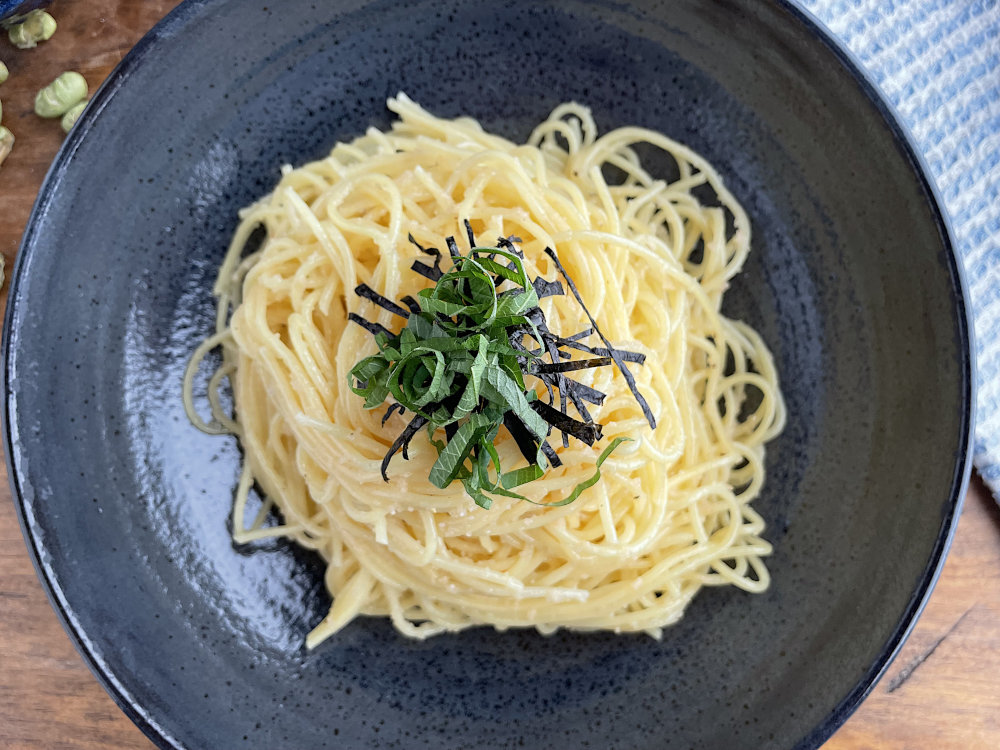
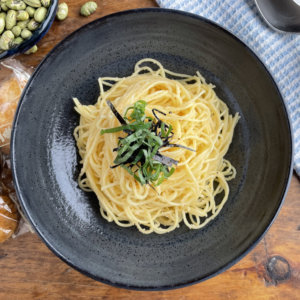
Easy Mentaiko Pasta
Ingredients
- 8 oz spaghetti
- 2 sacs mentaiko
- 3 T heavy cream
- 2 T whole milk
- 2 T butter melted
- 1 T light soy sauce substitute regular soy sauce if needed
- 8 turns black pepper
Instructions
Boil the pasta
- Cook the spaghetti in thoroughly salted water according to the package’s instructions.
Make the sauce
- While the spaghetti is boiling, gently slice open the mentaiko membrane and scrape out the eggs. Discard the membrane.
- Add the mentaiko along with the heavy cream, milk, melted butter, light soy sauce, pepper, and a pinch of kosher salt to a large bowl and mix well.
Assemble the pasta
- Once it's done cooking, drain the spaghetti.
- While still hot, add the spaghetti to the large bowl with the sauce. Toss the spaghetti with the sauce to evenly distribute.
Garnish and serve
- Place the pasta in individual serving dishes and garnish with shredded nori and shiso. Serve right away.

[…] Western influence started to enter Japan. Think sandwiches, katsus, curries, spaghettis (such as mentaiko and napolitan), potato salad, and […]